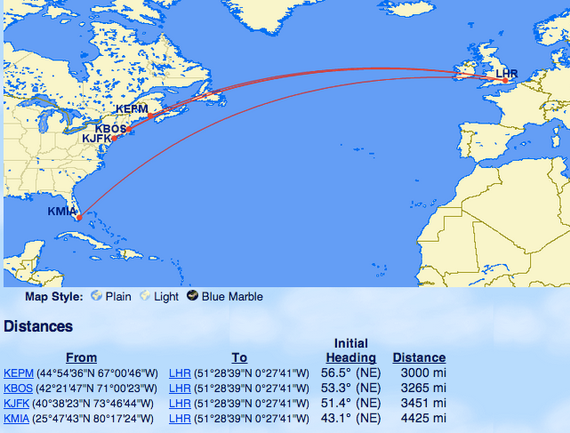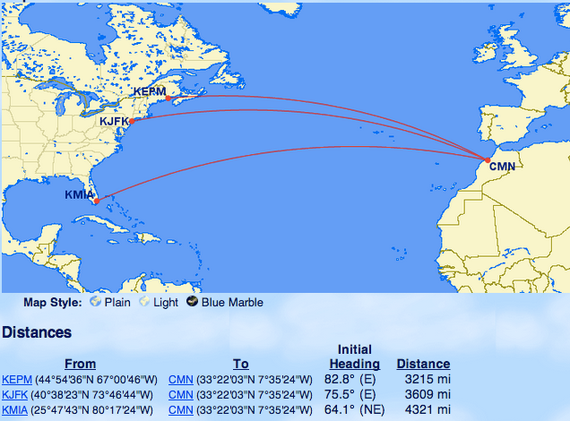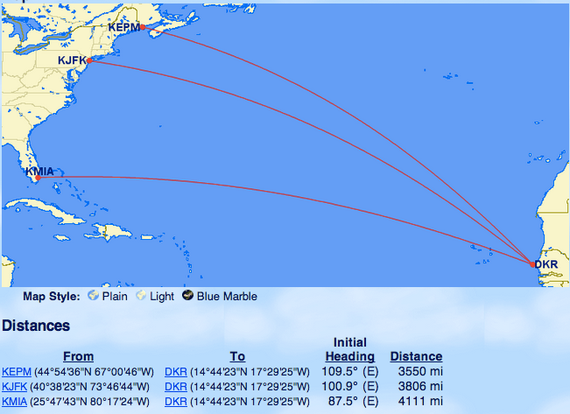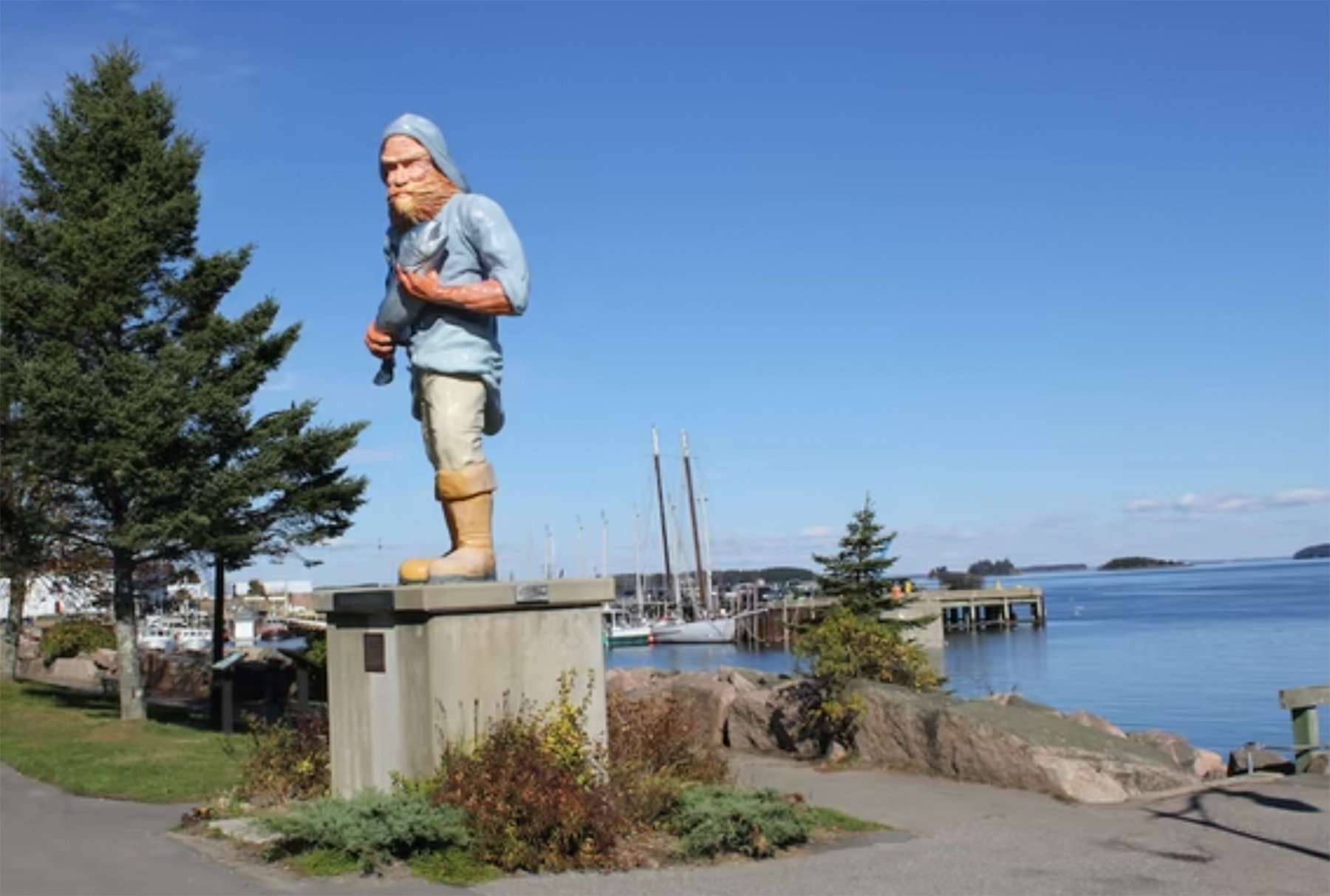My wife and I have exactly one frustration about the series of cities we’ve been visiting over the past two months. It is that we have been seeing things, meeting people, asking questions, getting answers, and overall being surprised-and-informed at roughly ten times the rate at which we’ve been able to describe any of this on line.
Yes, we realize that in the journalism business, as in life, this is a very fortunate sort of problem to have. But it’s a challenge nonetheless, which we’re continuing to address in several ways. Soon we’ll be augmenting our web posts — and Esri geoblogs, and reports from our friends at Marketplace — with a sequence of articles for our print magazine. I’m writing one now for the January issue — November’s the one that’s just appeared. (Say it with me: Subscribe!)
And when it comes to Eastport itself, where over the course of a week we had such a surprising range of interactions, with such a variety of people, drawn from such a minuscule community, I thought it might be useful to list the kinds of things we learned about and intend to discuss. I do this partly for journalistic transparency reasons; partly as a signal to people who generously spent time with us that it wasn’t for naught; and mainly to hint at the density of effort, imagination, and commitment to community we were exposed to during just one week. Items on the upcoming-features list include:
- The “Women of The Commons” and the gamble they have made to try to revive part of the historic downtown, which not long ago was largely boarded-up;
- The ups and downs of the “aquaculture” business, and what it looks like to stand on a pen in which 25,000 salmon are being fed — right next to other pens that together hold half a million fish;
- Why it is the best, and worst (but mainly best), of times for local lobstermen;
- What that garish fisherman statue, shown in the photo at top, is doing in the middle of town — hint, the answer involves Fox TV;
- How an economy and community work when most people assume they will need to hold 3 or 4 or 5 simultaneous jobs (a theme of yesterday’s Marketplace report);
- The role of the nearby Maine Maritime Academy, one of several ways in which the town that is short on young people is trying to entice more of them to stay;
- The startling ambitions of the Ocean Renewable Power Corporation;
- The also-startling but different ambitions of the local Port Authority, as they involve products ranging from live cattle to “torrefied” wood — and how the turmoil in Syria has affected them;
- The role of one local family in developing a (viable!) print newspaper, run by one brother and his wife, while the other brother has developed a city museum, begun a nascent set of artist studios, and restored derelict buildings. All of this within the confines of the four-block-long downtown;
- Why one experienced local mariner and big-ship pilot runs a global fish business from his home in Eastport, and another runs his manufacturing yard in the city;
- What a local co-op is doing to revive the scallop fishery, and shift the fishermen to a much more advantageous place on the value-added chain;
- How an Eat Local movement brings together local farmers, residents, and restaurants;
- The economic, cultural, educational, and other interactions between the town and the adjoining Passamaquoddy reservations;
- What Eastport’s 120-student Shead High School looks like;
- Some of the special language planning and usage of Eastport;
- How three restaurants, a coffee shop, a theater company, and an orchestra eke out an existence here;
- The battle to bring back the railroad; and
- The importance of location, location, location, as illustrated below.
Plus a lot else. All of this with the theme of people in the middle of what they universally recognize as a struggle for a town’s survival. Again I am piling these up in a list not for spoiler purposes but to indicate the same thing we repeatedly encountered in China: the density and surprise of local experience, and its connection to larger national and global trends.
A final note on location. As mentioned yesterday — and as cited non-stop by local port authorities — Eastport has the deepest natural harbor in the continental United States, at 60+ feet. Its siting, “remote” from the rest of America’s perspective, is also a potential strategic plus. The maps below are via the handy online Great Circle Mapper. They’re not exact renderings of sea routes, but they give you the idea that Eastport is the closest U.S. location to ports in Europe:

And perhaps more surprisingly, also those in Africa, as shown first with sample routes to Casablanca:

And then Dakar:

And, while it’s harder to show with this kind of map, Eastport also becomes by far the closest Eastern Seaboard location to Asia, through the warming Canadian arctic route.
More ahead. You can see why we are excited, and also the fortunate sort of frustration that we feel.




